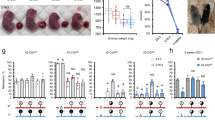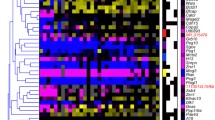Abstract
Genetic imprinting is a form of epigenetic silencing. But with a twist. The twist is that while imprinting results in the silencing of genes, chromosome regions or entire chromosome sets, this silencing occurs only after transmission of the imprinted region by one sex of parent. Thus genetic imprinting reflects intertwined levels of epigenetic and developmental modulation of gene expression. Imprinting has been well documented and studied in Drosophila, however, these studies have remained largely unknown due to nothing more significant than differences in terminology. Imprinting in Drosophilais invariably associated with heterochromatin or regions with unusual chromatin structure. The imprint appears to spread from imprinted centers that reside within heterochromatin and these are, seemingly, the only regions that are normally imprinted in Drosophila. This is significant as it implies that while imprinting occurs in Drosophila, it is generally without phenotypic consequence. Hence the evolution of imprinting, at least in Drosophila, is unlikely to be driven by the function of specific imprinted genes. Thus, the study of imprinting in Drosophilahas the potential to illuminate the mechanism and biological function of imprinting, and challenge models based solely on imprinting of mammalian genes.
Similar content being viewed by others
References
Allen, N.D., D.G. Cran, S.C. Barton, S. Hettle, W. Reik & M.A. Surani, 1988. Transgenes as probes for active chromosomal domains in mouse development. Nature 333: 852–855.
Baker, W.K., 1963. Genetic control of pigment differentiation in somatic cells. Am. Zool. 3: 57–69.
Barlow, D.P., 1994. Imprinting: a gamete's point of view. Trends Genet. 10: 194–199.
Bartolomei, M.S., A.C. Webber, M.E. Brunkow & S. M. Tilghman, 1993. Epigenetic mechanisms underlying the imprinting of the mouse H19gene. Genes Devel. 7: 1663–1673.
Beatty, R.A., 1957. Parthenogenesis and Polyploidy in Mammalian Development. Cambridge University Press, Cambridge.
Berg, C.A. & A.C. Spradling, 1991. Studies on the rate and sitespecificity of P-element transposition. Genetics 127: 515–524.
Bishop, C.P. & C.M. Jackson, 1996. Genomic imprinting of chromatin in Drosophila melanogaster. Genetica 97: 33–37.
Brannan, C.I. & M.S. Bartolomei, 1999. Mechanisms of genomic imprinting. Curr. Op. Gen. Dev. 9: 164–170.
Bruiting, K., S. Saitoh, S. Gross, B. Dittrich, S. Schwartz, R.D. Nicholls & B. Horsthhemke, 1995. Inherited microdeletions in the Angelman and Prader-Willi syndromes define an imprinting center on human chromosome 15. Nat. Genet. 9: 395–400.
Brun, L.O., P. Borsa, V. Gaudichon, J.J. Stuart, K. Aronstein, C. Coustau & R.H. FfrenchConstant, 1995. Functional haploidy. Nature 374: 506.
Carroll, L., 1872. Through the Looking Glass. Random House, NY, USA.
Cavalli, G. & R. Paro, 1998. The Drosophila Fab-7chromosomal element conveys epigenetic inheritance during mitosis and meiosis. Cell 93: 505–518.
Chandra, H.S. & S.W. Brown, 1975. Chromosome imprinting and the mammalian X chromosome. Nature 253: 165–168.
Cockett, N.E., S.P. Jackson, T.L. Shay, F. Farnir, S. Berghmans, G.D. Snowder, D.M. Nielsen & M. Georges, 1996. Polar overdominance at the ovine callipygelocus. Science 273: 236–238.
Cohen, J., 1962. Position-effect variegation at several closely linked loci in Drosophila melanogaster. Genetics 47: 647–659.
Corley-Smith, G.E., C.J. Lim & B.P. Brandhorst, 1996. Production of androgenic zebrafish (Danio rerio). Genetics 142: 1265–1276.
Crouse, H.V., 1960. The controlling element in sex chromosome behavior in Sciara. Genetics 45: 1429–1443.
Demakova, O.V. & E.S. Belyaeva, 1988. Effect of mating direction on the position effect variegation of T(1;2)dor var7in Drosophila melanogaster. Dros. Info. Service. 67: 19–20.
Dorn, R., V. Krauss, G. Reuter & H. Saumweber, 1993. The enhancer of position-effect variegation of Drosophila, E(var)3-93D, codes for a chromatin protein containing a conserved domain common to several transcriptional regulators. Proc. Natl. Acad. Sci. USA 90: 11376–11380.
Ferguson-Smith, A.C., H. Sasaki, B.M. Cattanach & M. A. Surani, 1993. Parental-origin-specific epigenetic modification of the mouse H19gene. Nature 362: 751–755.
Flybase: http://flybase.bio.indiana.edu.
Frevel, M.A.E., J.J. Hornberg & A.E. Reeve, 1999. A potential imprint control element. Identification of a conserved 42 bp sequence upstream of H19. Trends Genet. 15: 216–218.
Fuyama, Y., 1984. Gynogenesis in Drosophila melanogaster. Jpn. J. Genetics 59: 91–96.
Golic, K.G., M.M. Golic & S. Pimpinelli, 1998. Imprinted control of gene activity in Drosophila. Curr. Biol. 8: 1273–1276.
Hall, J.G., 1990. Genomic Imprinting: Review and relevance to human diseases. Am. J. Hum. Genet. 46: 857–873.
Hark, A.T. & S.M. Tilghman, 1998. Chromatin conformation of the H19epigenetic mark. Hum. Mol. Genet. 7: 1979–1985.
Hess, O., 1970. Independence between modification of genetic position effects and formation of lampbrush loops by the Y chromosome of Drosophila hydei. Mol. Gen. Genet. 107: 224–242.
Hessler, A.Y., 1961. A study of parental modification of variegated position effects. Genetics 46: 463–484.
Karpen, G.H. & A.C. Spradling, 1990. Reduced DNA polytenization of a minichromosome region undergoing position-effect variegation in Drosophila. Cell63: 97–107.
Kermicle, J.L. & M. Alleman, 1990. Gametic imprinting in maize in relation to the angiosperm life cycle. pp. 9–14, in Genomic Imprinting (Development-supplement 1990) edited by M. Monk and A. Surani. Company of Biologists Ltd., Cambridge.
Khesin, R.B. & V.N. Barshkirov, 1978. Maternal influence upon the V-type gene position effect in Drosophila melanogaster. Mol. Gen. Genet. 163: 327–334.
Koide, T., J. Ainscough, M. Wijgerde & M.A. Surani, 1994. Comparative analysis of Igf-2/H19 imprinted domain: Identification of a highly conserved intergenic DNase I hypersensitive region. Genomics 24: 1–8.
Komma, D.J. & S.A. Endow, 1995. Haploidy and androgenesis in Drosophila. Proc. Natl. Acad. Sci 92: 11884–11888.
Kuhn, B.T. & B. Packert, 1988. Paternal imprinting of inversion Uab 1causes homeotic transformations in Drosophila. Genetics 118: 103–107.
Lindsley, D.L. & G.G. Zimm, 1992. The genome of Drosophila melanogaster. Academic Press, NY.
Lloyd, V.K., D.A. Sinclair & T.A. Grigliatti, 1999. Genomic imprinting and position-effect variegation in Drosophila melanogaster. Genetics 151: 1503–1516.
Lock, L.F., N. Takugi & G.R. Martin, 1987. Methylation of the Hprtgene in the inactive X occurs after chromosome inactivation. Cell 48: 39–46.
Lorenz K., 1952. King Solomon's ring. Crowel, New York, USA.
Lyko, F., J.K. Brenton, M.A. Surani & R. Paro, 1997. An imprinting element from the mouse H19locus functions as a silencer in Drosophila. Nat. Genet. 16: 171–173.
Lyko, F., K. Bruiting, B. Horsthemke & R. Paro, 1998. Identification of a silencing element in human 15q11-q13 imprinting center by using transgenic Drosophila. Proc. Natl. Acad. Sci. 95: 1698–1702.
Martin, C.C. & R. McGowan, 1995a. Genotype-specific modifiers of transgene methylation and expression in the zebrafish, Danio rerio. Genet. Res. 65: 21–28.
Martin, C.C. & R. McGowan, 1995b. Parent-of-origin specific effects on the methylation of a transgene in the zebrafish, Danio rerio. Dev. Genet. 17: 233–239.
Mihaly, J., I. Hogga, S. Barges, M. Galloni, R.K. Mishra, K. Hagstrom, M. Muller, P. Schedl, L. Sipos, J. Gauszi, H. Gyorkovics & F. Karch, 1998. Chromatin domain boundaries in the Bithorax complex. Cell Mol. Life Sci. 54: 60–70.
Moore, T. & D. Haig, 1991. Genomic imprinting in mammalian development: a parental tug-of-war. Trends Genet. 7: 45–49.
Monk, M. & M. Grant, 1990. Preferential X-chromosome inactivation, DNA methylation and imprinting, pp. 55–62 in Genomic Imprinting (Development-supplement 1990) edited by M. Monk & A. Surani. Company of Biologists Ltd., Cambridge.
Muller, H.J., 1958. An androgenic homozygous male. Dros. Info. Service 61: 215.
Nicholls, R.D., S. Saitoh & B. Horsthemke, 1998. Imprinting in Prader-Willi and Angelman syndromes. Trends Genet. 14: 194– 200.
Noujdin, N.I., 1935. (An investigation of an unstable chromosome in Drosophila melanogasterand the mosaicism caused by it). Zoologishcheski Zh. 14: 317–352.
Noujdin, N.I., 1944. (The regularities of the heterochromatin influence on mosaicism. The hypothesis of the structural homozygosity and heterozygosity). J. Gen. Biol. 5: 357–388.
Noujdin, N.I., 1946. (Mosaics and its manifestation). Bull. de l'academie des sci. de l'urss. Serie biologique/Izvesti i a Akademii nauk SSSR. Seri i a biologicheska i a. 5: 357–388; 5: 519–545.
Nur, U., 1970. Translocations between eu-and heterochromatic chromosome, and spermatocytes lacking a heterochromatic set in male mealy bugs. Chromosoma 29: 42–61.
Nur, U., 1990. Heterochromatinization and euchromatinization of whole genomes in scale insects (Coccoidea: Homoptera). pp. 29–34 in Genomic Imprinting (Development-supplement 1990) edited by M. Monk and A. Surani. Company of Biologists Ltd., Cambridge.
Nur, U., J.H. Werren, D.G. Eichbrush, W.D. Burke & T.H. Eichbush, 1988. A 'selfish’ B chromosome that enhances its transmission by eliminating the paternal genomic. Science 240: 521–514.
Patterson, G.I., C.J. Thorpe & V.L. Chandler, 1993. Paramutation, an allelic interaction, is associated with a stable and heritable reduction of transcription of the maize bregulatory gene. Genetics 135: 881–894.
Prokofyeva-Belgovskaya, A.A., 1947. Heterochromatinization as a change of chromosome cycle. J. Genetics 48: 80–98.
Sapienza, C., 1989. Genome imprinting and dominance modification. Ann. NY. Acad. Sci. 564: 24–38.
Sasaki, H., P.A. Jones, J.R. Chaillet, A.C. Ferguson-Smith, S.C. Barton, W. Reik & M.A. Surani, 1992. Parental imprinting: Potentially active chromatin of the repressed maternal allele of the mouse insulin-like growth factor II (Igf2) gene. Genes. Dev. 6: 1843–1856.
Sharman, G.B., 1971. Late DNA replication in the paternally derived X chromosome of female kangaroos. Nature 230: 231–232.
Singh, P.B., 1994. Molecular mechanisms of cellular determination: their relation to chromatin structure and parental imprinting. J. Cell Sci. 107: 2653–2668.
Spofford, J.B., 1959. Parental control of position-effect variegation: I. Parental heterochromatin and expression of the whitelocus in compound-X Drosophila melanogaster. Proc. Natl. Acad. Sci. 45: 1003–1007.
Spofford, J.B., 1961. Parental control of position-effect variegation. II. Effect of sex of parent contributing white-mottled rearrangement in Drosophila melanogaster. Genetics 46: 1151–1167.
Spofford, J.B., 1967. Single-locus modification of position-effect variegation in Drosophila melanogaster. 1. white variegation. Genetics 57: 751–766.
Streisinger, G., C. Walker, N. Dower, D. Knauber & F. Singer, 1981. Production of clones of homozygous diploid zebrafish (Brachydanio rerio). Nature 281: 293–296.
Surani, M.A., 1998. Imprinting and the initiation of gene silencing in the germ line. Cell 93: 309–312.
Svensson, K., R. Mattsson, T.C. James, P., Wentzel, M. Pilartz, J. MacLaughlin, S.K. Miller, T. Olsson, U.J. Ereiksson & R. Ohlsson, 1998. The paternal allele of the H19gene is progressively silenced during early mouse development: The acetylation status of histones may be involved in the generation of variegation expression patterns. Cell 93: 309–312.
Takagi, N. & M. Sasaki, 1975. Preferential inactivation of the paternally derived X chromosome in the extra embryonic membranes of the mouse. Nature 256: 640–642.
Author information
Authors and Affiliations
Rights and permissions
About this article
Cite this article
Lloyd, V. Parental Imprinting in Drosophila. Genetica 109, 35–44 (2000). https://doi.org/10.1023/A:1026592318341
Issue Date:
DOI: https://doi.org/10.1023/A:1026592318341




